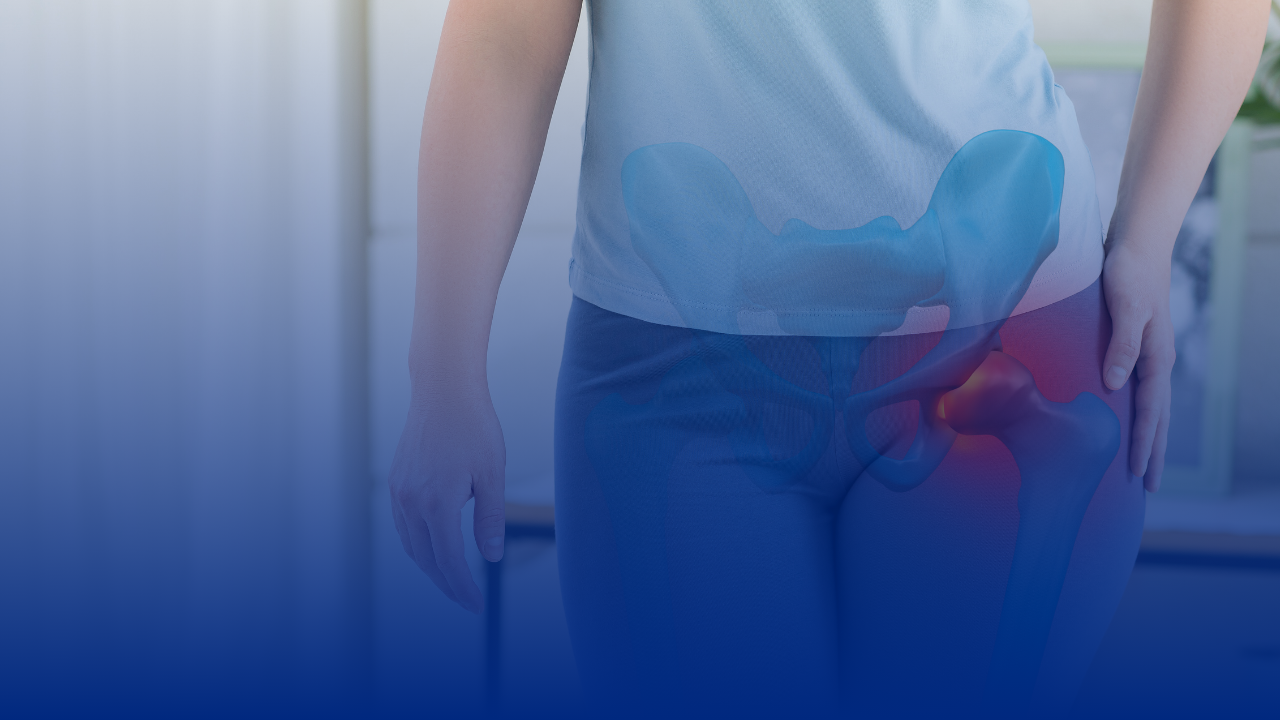
Hip Osteoarthritis Explained: Treatment, Movement & Pain Relief

By Belinda Prince, Physiotherapist & Robyn Yin, Accredited Exercise Physiologist
Living with hip osteoarthritis (OA) can be frustrating. It can affect your ability to move freely, do the things you love, or even get through the day without discomfort. But the good news? There’s a lot we can do to manage it, and we’re here to guide you through that.
We recently ran a session to break down exactly how we approach hip OA, and here are the big takeaways we want to share with you.
Start with Understanding What’s Going On
Once we’ve done an assessment—whether you're seeing a physio, an exercise physiologist, or both—we begin by working on improving mechanics. That means joint mobility, range of motion, and, often, muscle strength. You’d be surprised how often weak muscles are a key factor. We’re talking about everything from your glutes to your hip flexors, inner thighs, quads, core. You name it, it’s all connected.
Think about walking, standing up from a chair, or going upstairs. None of those actions rely on a single muscle group. You need a whole team of muscles working together to take pressure off the joint and help you move well.

Strength and Stability Are Game-Changers
One of the first things we focus on is strength, especially in the muscles that support your hips, knees, and ankles. The stronger those muscles are, the better they can absorb and distribute load. And if you struggle with balance or standing on one leg, that’s a sign your stability might need work too.
But here's the catch: it has to be tailored. We’re all at different levels, with different goals. Maybe you want to go hiking again, or maybe you just want to keep up with the grandkids. Either way, the exercises need to be specific to you.
The Role of Weight…It's Important, But Complex
We won’t sugarcoat it: managing weight can have a big impact on hip OA. Less body weight means less load on your joints. But we know it’s not as simple as “just eat better and move more.” If pain is holding you back or motivation is hard to sustain, you’re not alone…and it’s okay to reach out for help.
For some people, lifestyle changes might not be enough. We’re seeing more patients explore medication or weight loss injections under medical supervision. It’s not for everyone, but for those who’ve tried everything else, it’s something worth discussing with your GP.
Movement = Medicine (Even When It’s Cold!)
Let’s talk about pacing. We know how tempting it is to do everything while you're feeling good, only to crash later. But pacing is powerful. Taking breaks, using the right supports, and gradually building your strength can make a world of difference.
And yes, cold weather does seem to make joints feel stiffer for a lot of people, even if the research doesn’t quite prove it. Clients tell us all the time that heat packs, warm showers, hydrotherapy, and even infrared sauna blankets help them. So if it works for you, go for it!
Progressively Loading the Joint (Yes, That’s a Good Thing!)
A lot of people worry that exercise will make their joints worse. But when it’s done right, especially in weight-bearing positions, it actually helps. Why? Because your joints rely on movement to circulate synovial fluid, which delivers nutrients and clears out waste. That’s how we keep the joint as healthy as possible.
We also want to stress that progressive loading is essential. You might start with bodyweight squats, but over time, we’ll add resistance like weights or bands to keep the muscles adapting. That’s how we build strength safely and effectively. And don’t worry, we’ll meet you where you are.

Prehab Before Surgery? Absolutely
If you’re wondering whether you’ll eventually need a hip replacement, you’re not alone. We get asked this all the time. But here’s our advice: don’t base your decision on the scan alone. Some people have shocking X-rays but barely any pain. Others have minimal changes on imaging but significant pain and dysfunction.
The decision should always come down to how much it’s affecting your life. And even if surgery is on the cards, working with a physio or EP beforehand (what we call “prehab”) can make a massive difference in recovery.
One Final Thought
We always say our job is to help you get out of pain as quickly as we can, so you can start living your life again. Whether that means walking further, getting back into the garden, or just playing on the floor with your grandkids, we’re here for that.
If you’re dealing with hip OA, know that you’ve got options. Exercise can be powerful, tailored support makes a difference, and a little knowledge goes a long way.
👉 Watch the Full Talk
There’s a lot more to cover, and if hip osteoarthritis is something you’re dealing with, I recommend watching our full talk on BJC Connect. We dive deeper into treatment strategies, exercise tips, and long-term joint care, plus answer common questions from real patients. Whether you're just starting to explore your options or looking for new ways to manage your symptoms, this session is full of practical advice and support.


